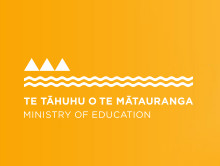Pouākai
nā Te Rau-o-te-Rangi Winterburn
He whakarāpopototanga
Kei roto i tēnei tuhinga e rua ngā wāhanga, ko te rota tuatahi, e pā ana ki te manu nui e kīia nei, ko te pouākai. Ko te tuarua, he whakatīpoka nā te kaituhi hei whakamārama i āna kōrero.
Summary
This text includes 2 elements: the first, a poem about the bird known as the pouākai (Haast’s eagle); the second, some explanatory author’s notes discussing each verse.
| Te momo reo tuhi Language style |
|
|---|---|
|
Ētahi āhuatanga o Features of this language style |
|
I te Ākonga e Pānui ana i te Pukapuka
During Reading
1. Kōwhirihia tētahi kararehe, manu rānei hei kaupapa tuhinga whiti whakangahau. Me whai huarite te rere o te tuhi, pērā ki tā te Pouākai. Kei te ākonga te tikanga, mehemea kia huarite i ia rārangi e rua, (pērā i te tauira) i ia tuarua, tuawhā rānei o ngā rārangi. Whakamahia te reo whakaahua mō te kararehe kua kōwhirihia.
Choose an animal or bird and write a poem about it. The poem should use a rhyming flow similar to that of the Pouākai poem. Students can choose to have every two lines rhyme (like the example), or else have every second and fourth line rhyme. Include descriptive language when describing the animal in the poem.
2. Ka whakaaturia ngā whiti whakangahau e ngā ākonga ki tētahi minenga.
Students perform their poem to an audience.
3. Tuhia mai he whakamāramatanga hei whakamōhio ai te kaipānui i te whakahiwatanga o ia whiti, i ngā whakamahinga o te reo, tae atu ki ētahi āhuatanga whakapapa o te koiora kua kōwhirihia.
Students write an explanation to inform the reader about the inspiration of each verse and their use of language, giving details of some of the whakapapa of their chosen creature.
4. Pānui tahi i te whiti whakangahau me te wāhanga ‘he whakamāhuki’. Matapakina te whiti whakangahau nei mā ngā whakamāhuki tāpiri hei āwhina. Anei he pātai hei āwhina:
- Kua rongo kōrero koe e pā ana ki tēnei manu? He aha ōu mōhiotanga?
- He aha te take i tuhia e te kaituhi he kōrero mō tēnei mohoao?
- He aha te tikanga a te kaituhi mō tēnei rerenga kōrero, “Me matakana ngā kanohi?”
-
He aha i whakataurite ai te kaituhi i te pouākai, ki te kārearea rānei, ki te kāhu rānei?
He aha ngā ōritenga, ngā rerekētanga rānei o ērā manu? E ora tonu ana ētahi ināianei? - He akoranga e taea ai e te pouākai te whakaako mai ki te oranga o te tangata. He aha ngā werotanga me ngā painga kei roto i tēnei whiti whakangahau?
Get students to read the Pouākai poem and the explanation together. Discuss the poem, using the extra information provided in the notes. These questions may be helpful:
- Have you heard about this bird before? What do you know?
- Why do you think the author wrote about this creature?
- What does the author mean by the sentence “Me matakana ngā kanohi”?
- Why do you think the author compares the pouākai and the kārearea or kāhu? What are their similarities and differences? Are there any at all?
- Can the pouākai teach us anything about our own lives? What are the challenges and benefits from this poem?
5. Ka tautohu ngā ākonga i ngā kupu hou i tohua i ngā whakatīpoka a te kaituhi. Tuhia tētahi rerenga kōrero mō ia kupu hou [kei roto i te whiti whakangahau] hei whakaatu i tō māramatanga o te kupu.
Using the new words identified in the notes, ask students to write a sentence for each new word that shows their understanding of these words.



